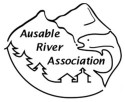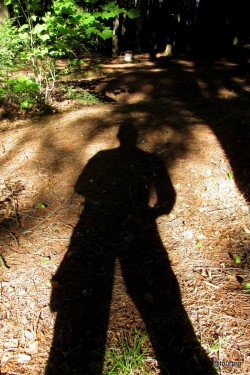Plant Trees Along the Ausable River and its Tributaries
on Sunday, April 29
 Volunteers are sought to plant trees along river and stream corridors in the Ausable River Watershed on Sunday, April 29, the Ausable River Association (AsRA) and the New York State Department of Environmental Conservation (DEC) announced.
Volunteers are sought to plant trees along river and stream corridors in the Ausable River Watershed on Sunday, April 29, the Ausable River Association (AsRA) and the New York State Department of Environmental Conservation (DEC) announced.
The trees will be planted at sites in the Towns of Jay and Keene and the Village of Au Sable Forks to stabilize eroded stream and river banks damaged by last year’s flooding, protect property from future flood damage and improve wildlife habitat. Sites include River Side Park and the water line construction site in Au Sable Forks, the Wells Memorial Library and Brookside Motor Inn in Upper Jay, and others from Keene Valley to Au Sable Forks. Volunteers will join AsRA, DEC, Adirondack Park Agency (APA) and Essex County Soil & Water Conservation District (SWCD) staff in planting trees.
Volunteers are asked to meet at the Grand Union parking lot along NYS Route 9-N in Au Sable Forks at 12:00, noon, on April 29. After receiving quick instructions from organizers, volunteers will form teams and disperse to sites with organizer staff. Volunteers should be prepared to provide their own transportation or carpool with other team members, though some sites are within walking distance.
The tree planting will take place rain or shine, so volunteers should dress properly for weather conditions. Sturdy hiking shoes or boots will be needed. Volunteers should also bring: work gloves, a shovel (if you have one); drinking water; and snacks (if desired). Light refreshments will be provided in the afternoon to planting teams.
Volunteers will have the opportunity to learn about tree planting techniques, proper species placement according to habitat, and long-term care. Volunteers can participate for whatever amount of time in the afternoon they desire, though planting will conclude by 5 pm or when all trees have been planted, if sooner.
The trees are supplied by the DEC Saratoga Tree Nursery through the Lake Champlain Basin “Trees for Tributaries” program. The program is a partnership between DEC and the United States Department of Agriculture’s (USDA) Natural Resources Conservation Service (NRCS). The goals of the program are to restore and protect the stream corridors that connect to Lake Champlain. AsRA and Essex County SWCD, as part of the Champlain Watershed Improvement Coalition of New York, receive support from the America’s Great Outdoors Initiative through USDA-NRCS for this year’s riparian buffer planting projects.
 If you have questions, please visit www.ausableriver.org or contact the Ausable River Association at 873-3752 or info@ausableriver.org.
If you have questions, please visit www.ausableriver.org or contact the Ausable River Association at 873-3752 or info@ausableriver.org.

 Leasing of recreational camps on the former Champion lands in Franklin, Herkimer, Lewis and St. Lawrence counties will be allowed under an agreement reached this week with the state and Heartwood Forestland Fund III, LP, the Department of Environmental Conservation (DEC) Commissioner Joe Martens announced today. As part of the agreement, Heartwood Forestland, the owner of a conservation easement on the former Champion lands, will transfer 2,797 acres of valuable wildlife habitat in the Deer River corridor to the state.
Leasing of recreational camps on the former Champion lands in Franklin, Herkimer, Lewis and St. Lawrence counties will be allowed under an agreement reached this week with the state and Heartwood Forestland Fund III, LP, the Department of Environmental Conservation (DEC) Commissioner Joe Martens announced today. As part of the agreement, Heartwood Forestland, the owner of a conservation easement on the former Champion lands, will transfer 2,797 acres of valuable wildlife habitat in the Deer River corridor to the state.



